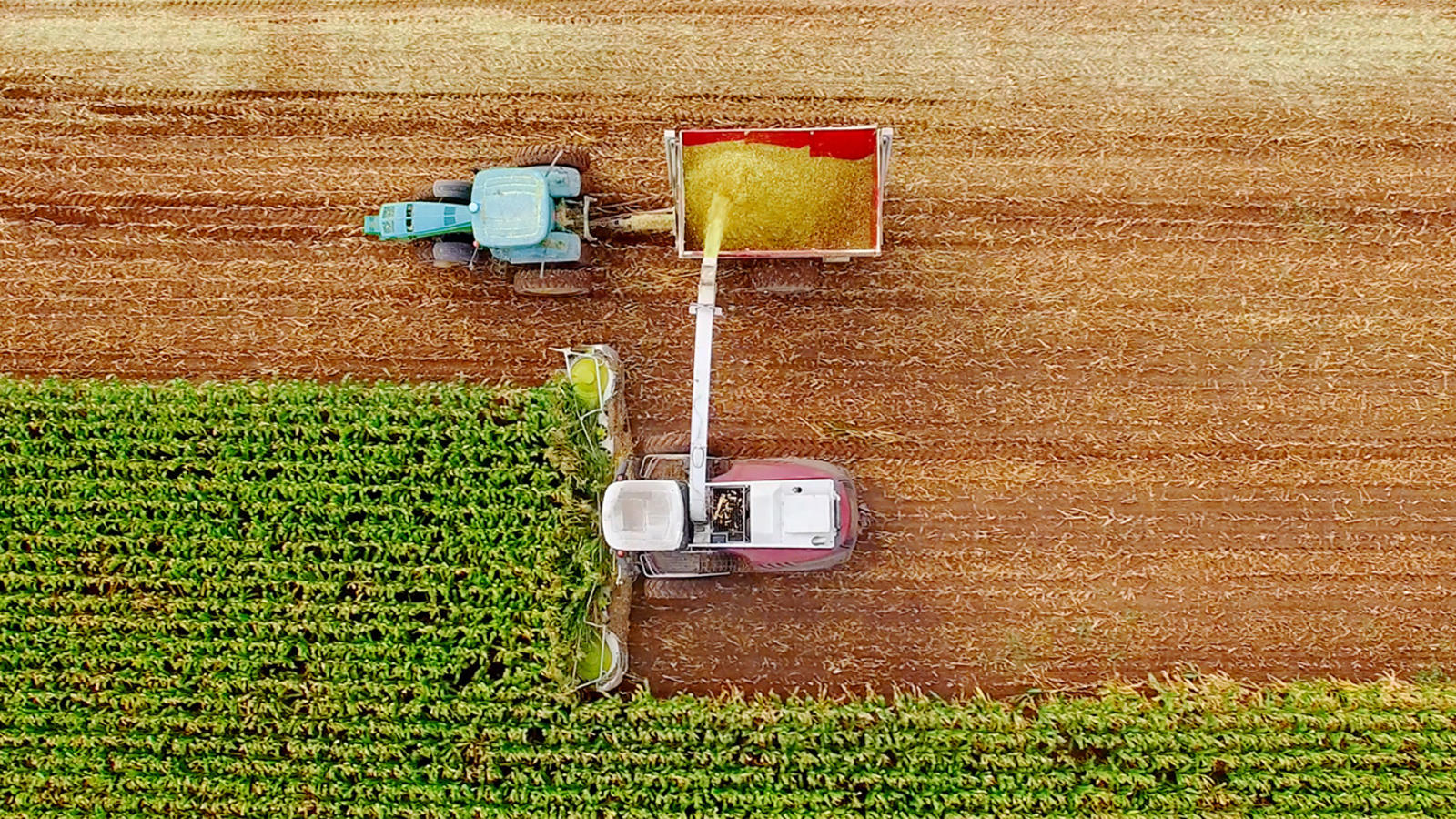
Cash Crop
How A Swath Of Midwestern Cornfields Explains The Effect Of Finance On Economic Growth
Based on research by Alexander Butler and Jess Cornaggia
How A Swath Of Midwestern Cornfields Explains The Effect Of Finance On Economic Growth
- For decades, economists have asked whether access to more money causes economic growth.
- The difficulty of cleanly defining cause and effect makes that a hard question to study empirically.
- But examining real-life events shows that access to more money does affect economic growth, and higher productivity is one of the main channels through which it happens.
Crisp and green – nothing says abundance like a cornfield, its acres of swaying leaves as uniform as dollar bills. Since the start of agriculture, farmers have known that this abundance depends profoundly on outside forces, including rainfall, soil quality, even friendly neighbors.
Less obvious, not just to farmers but also to economists, is the role that finance plays in business growth. Does access to more money cause economic growth? And if it does, exactly how does finance sow productivity? A swath of Midwestern cornfields, it turns out, held the answer.
Rice Business Professor Alexander W. Butler and colleague Jess Cornaggia, now at Pennsylvania State University, seized a chance to conduct what’s known as a natural experiment — using real-life events to test theoretical hypotheses — to examine the finance/growth conundrum.
They did this by looking at the impact of the federal Energy Policy Act, which was enacted in 2005 and over a period of years nearly doubled the quantity of renewable fuel additives in American gasoline. Coupled with rising crude oil prices and the availability of federal biofuel tax credits, the legislation boosted demand for U.S.-grown corn, the main ingredient in ethanol.
The events were fortuitous from a research point of view. They allowed Butler and Cornaggia to add to the body of research about finance and growth by uprooting it from theory and transplanting the question to a real-life government policy. Conventional wisdom has long suggested that finance affects growth, but it’s a hypothesis that’s surprisingly hard to test. The biggest challenge is trying to weed out cause from effect: Does finance create growth, or does economic growth create more funds for production?
To answer these questions, the professors created a multipart experiment based on the real-life ethanol policy. Corn production proved a handy test case. Farmers and economists both use crop yields as a measure of farming productivity, so data on harvested bushels per acre planted are available county-by-county every year.
Next, the researchers needed a reliable way to measure farmers’ access to finance. They hit on measuring county-level bank deposits. Previous research shows that local bank deposits have an important positive effect on local economic outcomes, which are influenced by bank loans. To confirm this metric was a good proxy for finance levels, the professors studied several alternative measures of finance access. All showed similar outcomes.
Finally, to analyze the precise shift in corn production in response to higher demand for ethanol, Butler and Cornaggia used what they call a “triple differences” procedure. The first difference is the response of productivity to greater versus lesser access to external finance. The second is the response of productivity to a shift in demand. The third is the response of productivity for the commodity with increased demand — in this case corn — versus a control crop that had no shift in demand — in this case soybeans.
Complex as it was, the triple test allowed the researchers to dismiss many other hypotheses. Any competing theory not only would have to exclusively refer to corn, it would also have to relate only to the years of the ethanol boom and only describe those counties whose farmers enjoyed high levels of outside finance.
So what did they find? The effect of finance on growth is real. In response to rising demand for corn, yields in the Midwest increased by 10.4 more bushels per acre in counties with high bank deposits than in counties with low bank deposits.
In other words, an outside shift in demand — the ethanol boom — led to higher levels of productivity, which were in turn determined by farmers’ varying access to productivity.
But even with the higher demand, counties with low levels of bank deposits weren’t able to increase their corn yields as much as counties with better access to finance.
Put simply, there indeed is a critical link between finance and economic growth. For decades, the exact interaction has been as hard to discern as the action of minerals, water and soil on a corn kernel. Harvesting their data from the American heartland, Butler and Cornaggia brought new insight to the question. Finance really does feed economic growth, they found. Higher productivity is the crucial way that finance makes it flourish.
Alexander W. Butler is a professor of finance at Jones Graduate School of Business at Rice University.
To learn more, please see: Butler, A. W. & Cornaggia, J. (20ll). Does access to external finance improve productivity? Evidence from a natural experiment. Journal of Financial Economics, 99(1), 184-203.
Never Miss A Story


